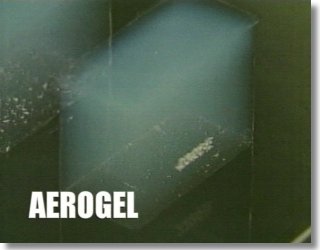|
What is a comet? A comet is sort of a ball of ice, basically, with some rock thrown in there, and besides that, we don't really know. That's one of the reasons why we'd like to go to a comet, visit it, drop a probe down in there and do some exploration, because we don't really know what it's made of. |
Comets contain dust, but they're characterized by larger concentrations of water ice and frozen gases than asteroids.
|
When we see it going around the Sun, a comet will put out a big tail, in fact it puts out two tails... |
When comets pass close to the Sun, the gases begin to heat up and stream back behind the nucleus, or head, of the comet and form a tail.
|
One of the tails is made out of water, and one of the tails is made out of dust. And it goes around the Sun, the tail gets longer and longer, and then as it goes away from the Sun, the tail diminishes until there's no tail at all. |

Billions more orbit the Sun beyond the orbit of Pluto.
Some comets come under the gravitational influence of Jupiter... and return to the inner solar system more frequently.
The tail of a comet always points away from the Sun, driven backwards by the small but constant pressure of the solar wind.
Each time a comet passes the Sun, it burns off more of its gases.
Some then become dead rocks, rather like asteroids.
Some fall directly into the Sun.

How they come to travel down into the inner solar system, or cross Earth's orbit, is the result of gravitational interactions with our giant planets such as Jupiter, or an even more long distance passing encounter with a nearby star.
For centuries, the appearance of a comet in the skies was an omen of important events, often bad luck for those who saw it.
Halley's comet, named after the mathematician who figured out its 76 year orbit, appears in the Bayeux Tapestry, commemorating the Norman conquest of England.
Of course, while it may have been bad luck for the English... on the other hand the Normans should have been pretty happy!
New technologies have now made it possible, for the first time, to travel out to rendezvous with a comet.
Now en route to Comet Wild-2 is the Stardust Mission.
Built by Lockheed Martin, launched in 1999, and operated at the Jet Propulsion Laboratory, Stardust should get to its target in 2004.
The heart of its innovative design is a kind of double-sided ping-pong paddle, looking something like a waffle iron.
Both sides are coated with an amazing material called aerogel-a solid that's mostly air captured in a sponge-like glassy form.

En route to the comet, Stardust has already begun to stick its paddle out to capture interstellar dust particles.
At the comet, the paddle will collect material from the comet's tail.
Then, the samples will be returned to Earth in an air tight, sterile capsule to ensure we're looking at pure star- and comet dust.
It should be winter on the plains of Utah when the capsule returns.
Then the dust trails in the aerogel will lead researchers to pristine comet particles never studied in this way before.
|
Tom Duxbury This mission puts us on the verge of discovery. We will be the first mission to launch, to go out beyond the Earth-Moon system and capture particles from another planetary body and bring those back to Earth. It's just unbelievably exciting to be part of such a project. |
In 1994, chunks of a comet named Shoemaker-Levy 9 after its discoverers, slammed into Jupiter.
Astronomers at the Space Telescope Science Institute were thrilled by the images. Each chunk of comet left a dark splotch in Jupiter's clouds.
You could even see the fireball rising high over the planet's clouds. It was the equivalent of many nuclear bomb blasts.
But soon Jupiter's vast storm system covered all traces of the impact.
Now we know that comets passing across our skies have nothing to do with our fate down here on Earth, though they may well have had something to do with the origin of some of the water on our planet... and perhaps even life itself.
|
In the very early days of the solar system, of course, there were more comets flying by, we think. The comets that were flying by were also helping to bring water to the planets. So without comets hitting the Earth and bringing all their water, we might not have had the same kind of oceans that we have today. |
|
WANT
TO LEARN MORE?
|
||
|
Missions: Stardust Deep Space 1 |
Recent Articles: |
Additional Links: • JPL's Solar System Exploration • The Nine Planets • Views of the Solar System • Windows to the Universe |
![]()
